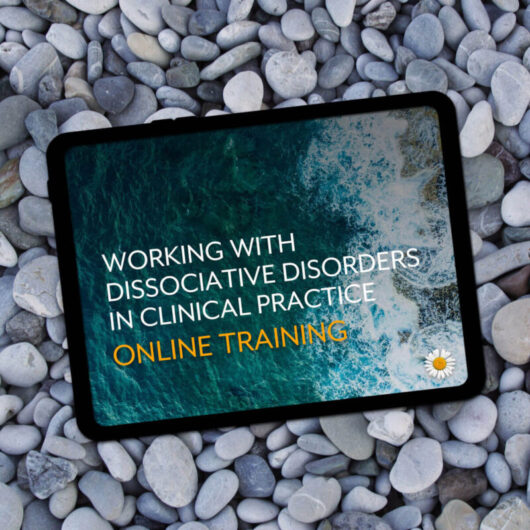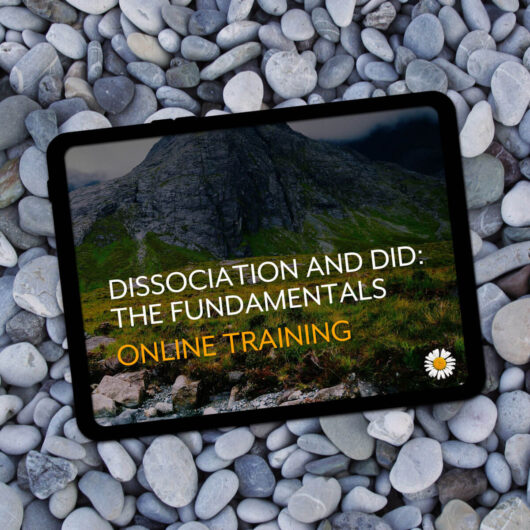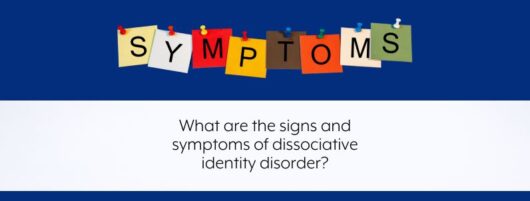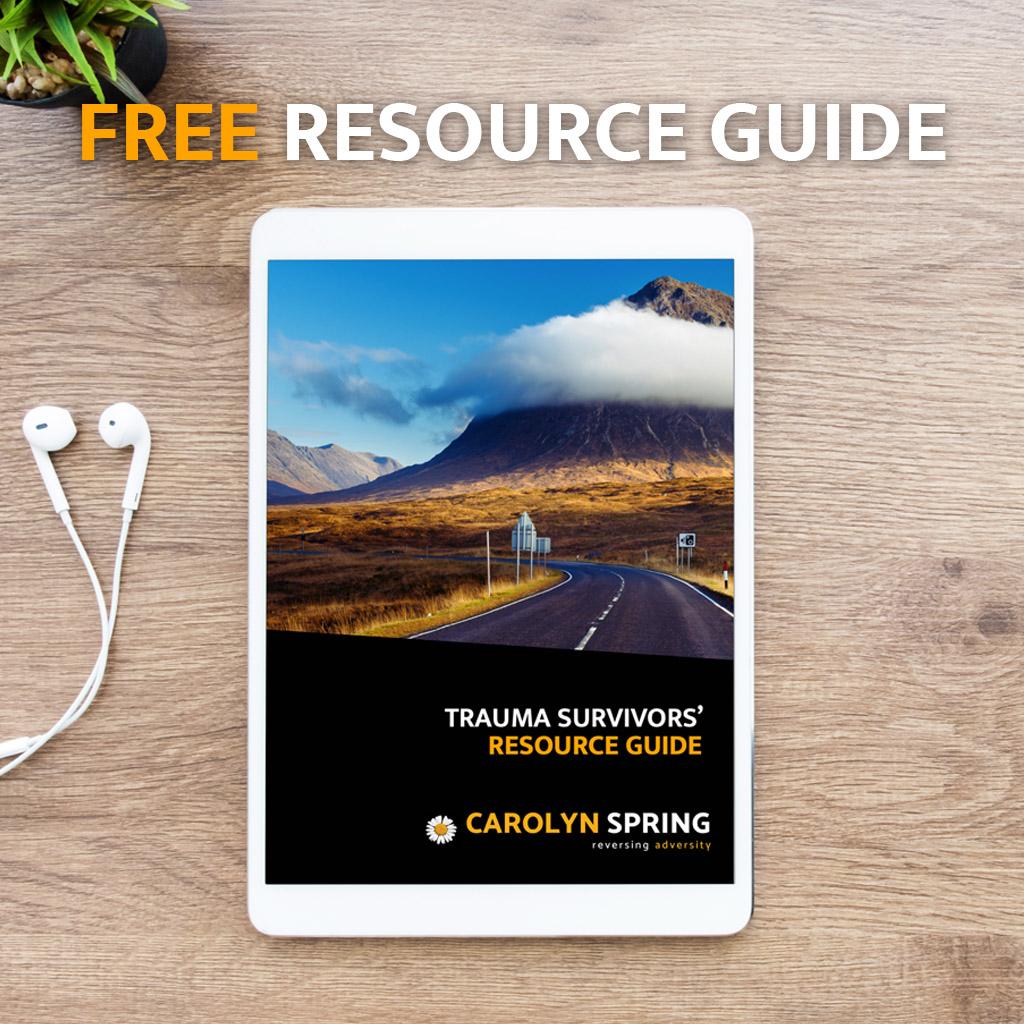Dissociation is little understood, but actually remarkably common: it’s the third most commonly reported psychiatric symptom. Where there’s a history of trauma, we can reasonably expect there to be an experience of dissociation. In later life this takes the form not just of numbing of emotions or detachment from reality (especially resulting in denial), but a fundamental disconnection between thoughts, feelings, beliefs, sensations and behaviours.
The impact of dissociation is that we don’t join up – we don’t integrate – our experiences in the way that they normally are connected: so we may be completely out of touch with our feelings, we may have dissociative amnesia, we may be unaware of our body sensations, or we may have a shifting sense of identity. All of these symptoms can be traced back to a root response to trauma of dissociation. It’s not the brain gone wrong – it’s the brain gone right, in an attempt to protect us. It’s just that over time dissociation becomes less and less helpful in surviving a non-threatening environment. Dissociation is the right response to danger; it’s an unhelpful response to safety – and that’s what therapeutic approaches to working with trauma can focus on.
Explore my resources below, and especially my ‘Dissociation and DID: The Fundamentals‘ and ‘Working with Dissociative Disorders in Clinical Practice‘ courses to find out more.






